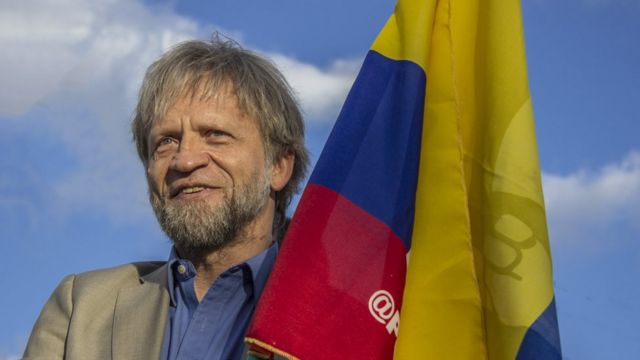A recent poll in Colombia released on June 3 says Juan Manuel Santos would win 61.6 percent of a vote, whereas Antanas Mockus would win just 29. 8 percent.
The results of the first round of elections on May 30 proved that polls are often unreliable. Precise numbers aside, the June 3 poll suggests that Santos will win handily when Colombians vote again on June 20.
Rather than use the imperfect science of polling, LatAmThought will use an even more imperfect one – political alliances – to break down how the second round of voting may play out.
Partido de la U/Partido Verde – Partido Liberal
Rafael Pardo told voters they are free to choose whomever they want. A June 2 meeting between Santos and Pardo confirmed that there would be no alliance, meaning that the 636,000+ voters, or 4.4 percent of voters, would be free to cast their vote for Santos, Mockus, or neither.
Partido de la U – Partido Conservador
The first alliance announced after the primera vuelta was that between the Conservative Party, represented in the elections by Noemi Sanin, and Partido de la U. This alliance suggests that most of the 892,000+ people (6.1 percent) who voted for Sanin on May 30 will vote for Santos on June 20.
Partido de la U – Cambio Radical
The representative of Cambio Radical, German Vargas Lleras, did exceptionally well in the elections, doubling the amount of votes that late polls expected. Interestingly, Vargas Lleras was one of the first to campaign against Uribe, announcing his candidacy in 2009, well before Uribe was prohibited from seeking a third term.
Although ideologically many of Vargas’ followers may be more aligned with Santos, some may be put off by Santos’ close ties with Uribe, as well as differences among the two parties’ top brass. Additionally, Santos may have his own presidential aspirations in 2014, which may also prohibit him from endorsing the man who he may one day run against.
Cambio Radical is expected to reach a decision about whether they will support either candidate on June 8. Until then, the 1.5 million voters (10. 1 percent) who chose Vargas Lleras remain at-large.
Partido Verde – Polo Democratico
The Polo Democratico wrote in an open letter to Mockus that they would be willing to form an alliance, though Mockus has dismissed any potential alliance with the Polo. “Cooperation” between the two parties, however, is still a possibility, and it is difficult to imagine many of 1.3 million people who voted for Gustavo Petro choosing Santos over Mockus.
Partido Verde – Abstainers
Mockus is trying to go for the more than 15.7 million Colombians who didn’t vote. Though Mockus made a statement that he will try to get votes from some of the four candidates who did not pass to the second round, he wants to focus his efforts on the abstainers. This is no easy task. It is always harder to get a new customer than keep an existing one, especially when one of the options is a vote en blanco, literally, a vote for no one.
Some analysts and experts predict that fewer people will vote in the second round, and, with less options at their disposal, that more will vote en blanco. In the first round, 224,000+ people, or 1.5 percent of all votes, were cast for none of the nine candidates running.
These potential shifts in the electorate’s preference, combined with human unpredictability make it all but impossible to predict numbers. The four runners up amassed nearly 30 percent of the vote. How many of them will vote en blanco? How many will vote blindly based upon their party lines? How many won’t show up to vote at all? This last question goes for supporters of Santos and Mockus, as well.
One thing is certain. With the wind out of the green wave’s sails, it’s looking good for Santos.

Reply